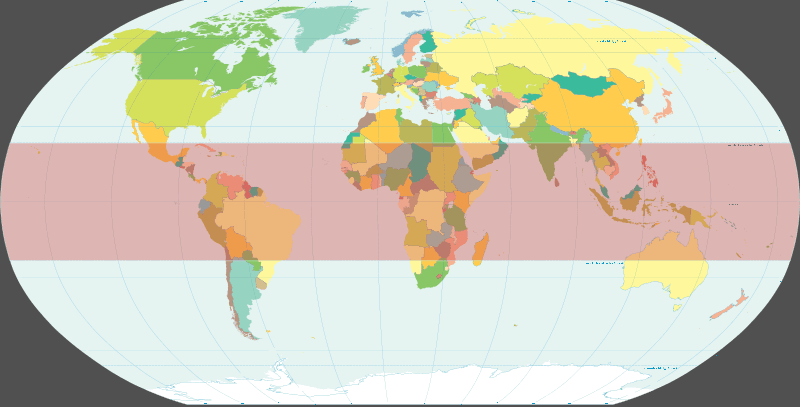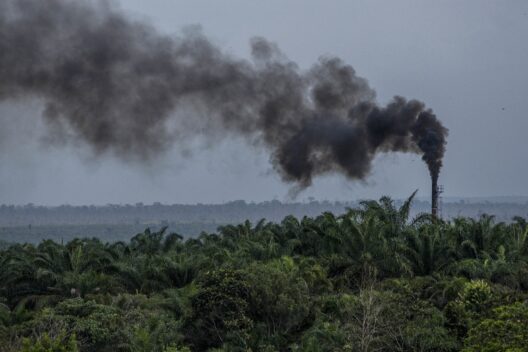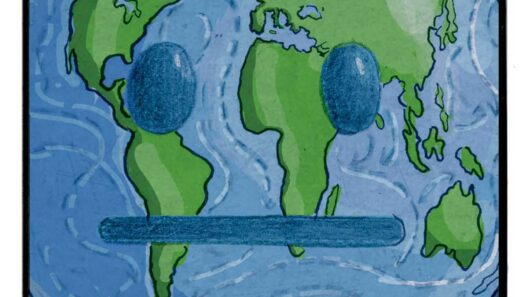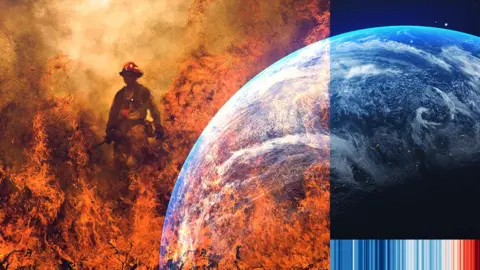The Equator, that imaginary line circling the globe, delineates the planet’s most vigorous wilderness—the tropics. This region is synonymous with warmth, lush biodiversity, and a tempestuous climate. But what type of climate truly flourishes near the Equator? The answer lies within the intricate complexities of tropical climates, which can be mesmerizing yet daunting when examined closely. Are you ready to dive into the heart of the tropics?
To understand the climate proximal to the Equator, one must first acknowledge its geographical positioning. The Equator sits at 0 degrees latitude, serving as the fulcrum around which the Earth rotates. This unique placement ensures that regions near the Equator receive direct sunlight throughout the year, contributing to what is classically known as a tropical climate. But not all tropical climates are identical; they vary significantly across different regions.
Primarily, two significant classifications of tropical climates are recognized: the tropical rainforest climate (Af) and the tropical savanna climate (Aw). Both types exhibit their own unique characteristics, profoundly influencing the ecosystems they host. The tropical rainforest climate, for instance, typically maintains high humidity levels and experiences abundant precipitation throughout the year. It might pique your curiosity: how does such consistent rainfall affect biodiversity in these areas?
In regions classified with a tropical rainforest climate, expect rain to drench the land nearly every day. The annual precipitation often exceeds 100 inches, creating a verdant paradise teeming with life. The canopy of these forests resembles a vibrant tapestry, with myriad species of trees, plants, and wildlife woven intricately together. Epiphytes, for example—plants that grow on other plants—thrive in this humid environment, showcasing nature’s remarkable adaptability.
Yet, while the lush surroundings can appear idyllic, the rapid deforestation occurring in many tropical rainforest regions poses a grave challenge to the environment. As valuable biodiversity is lost, the intricate ecological balance is disrupted, leading to unforeseen consequences. Can we continue to turn a blind eye to these challenges, or will we muster the courage to act?
In contrast, the tropical savanna climate, characterized by a distinct wet and dry season, features a more heterogeneous landscape. The dry season can be harsh, leading many species to adapt and build resilience. Here, the vegetation transitions into grasses, interspersed with clusters of trees—such as the iconic baobab. During the wet season, life flourishes, but the dry spells create a stark dichotomy that defines the savanna’s character. It is fascinating to observe how the fauna, from majestic elephants to agile antelopes, adapt to these fluctuations. How does each organism manage to thrive despite harsh conditions? Each adapts with incredible ingenuity.
Furthermore, the tropical climate is also sharply influenced by its global positioning and atmospheric dynamics. The Intertropical Convergence Zone (ITCZ) plays an essential role in determining precipitation patterns. This band of low pressure oscillates with the changing seasons, effectively determining where rain occurs and how much falls. Understanding this complex relationship between atmospheric circulation and climate is crucial for predicting patterns and preparing for the impacts of climate change.
Climate change presents a multifaceted challenge to equatorial regions, influencing not just temperature but also precipitation patterns. As the planet warms, scientists have observed shifts in the rainfall distribution across tropical environments. Some areas may experience intensified rainfall events, increasing the risk of floods, while others may find themselves in the throes of drought. What would be the long-term implications for the biodiversity that has flourished in these climates for millennia? It is a question that stirs concern and necessitates action.
Moreover, the impact of climate change is not merely limited to regional climates; it reverberates through the global ecosystem. The destruction of the rainforest due to logging, agriculture, and other human activities results in increased carbon emissions, subsequently exacerbating global warming. Each tree cut down is a loss, not just for its immediate environment but also for the world at large. Can we really afford to ignore the interconnectedness of our ecosystems? The survival of tropical environments has universal implications, urging us to broaden our view and include the well-being of the entire planet.
In tall tales often told about the tropics, every sunset appears infused with shades of gold and crimson, while rainbows spring forth with the promise of seasonal renewal. However, beneath this enchanting exterior lies an urgent narrative—a narrative screaming for preservation amidst the threats they face. Countries near the Equator, often the most biodiverse, now find themselves confronting challenges unprecedented in their scope.
Combatting these challenges requires collective effort. It starts with awareness: recognizing the profound influence of tropical forests on climate regulation, carbon sequestration, and maintaining global biodiversity. Shifting to sustainable agricultural practices, reducing deforestation, and promoting conservation initiatives will be paramount. In this endeavor, the question arises—what role will you play in safeguarding the heart of the tropics?
The future of equatorial climates holds potential and peril. While challenges abound, so too must solutions emerge—ones that resonate with a global community willing to act. Only through concerted action can we hope to preserve these vibrant ecosystems, not just for ourselves but for the generations yet to come.








